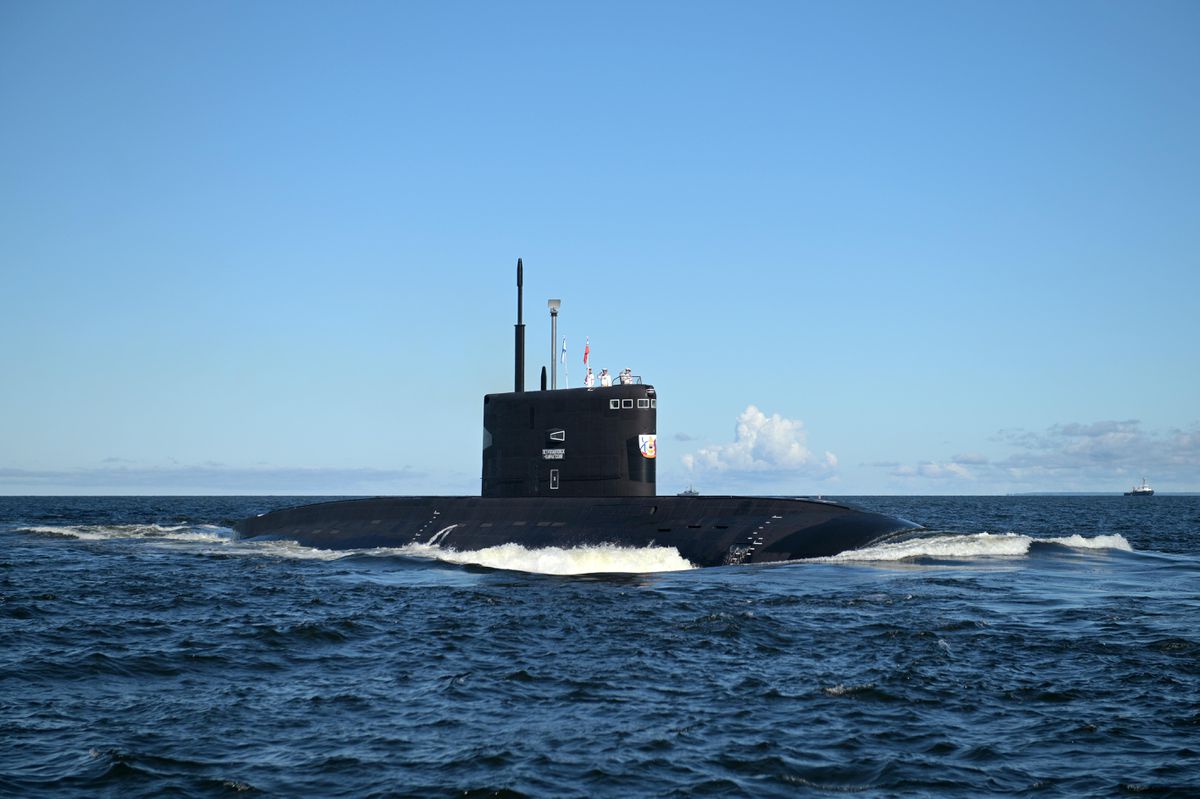
ST PETERSBURG, RUSSIA – JULY 26, 2020: The Petropavlovsk-Kamchatsky diesel electric submarine in the … [+]
Alexei Druzhinin/TASS
Virtual assistants such as Apple’s Siri or Amazon’s
AMZN
So why not a virtual assistant to help the U.S. Navy find Russian and Chinese submarines?
The Navy wants a virtual assistant — like the ones found on consumer smartphones — to help overloaded sonar operators manage multiple anti-submarine warfare (ASW) systems. In particular, active sonar on Navy cruisers and destroyers come with a variety of settings. “This includes employment decisions such as changing the operational mode between pulsed active sonar (PAS) and continuous active sonar (CAS) as well as changing waveform and various other system settings,” according to the Navy research solicitation. “Operators must conduct sonar analysis of resulting sonar returns and interpret them based on the sonar settings and the environment.”
This is where a Siri-like assistant would come in handy. The AI would use sensor data and monitoring of environmental conditions to recommend optimum sonar employment, and to assess potential moves of the enemy sub. The system would provide sonar operators with “situational awareness regarding key parameters such as primary propagation path(s), bearing-dependent complications (such as sea mounts that might obscure threats), significant topology features into which a threat might retreat to minimize detection, best tactical waveforms, and situational best practices to enable operators to maximize the potential of the tactical sonar suite for the specific conditions present at that time and location.”
The Navy is hoping to see at least a 25 percent gain in active sonar efficiency by employing a virtual assistant.
Phase I of the project calls for developing an AI architecture and algorithms. Phase II calls for testing the virtual assistant on the hull-mounted sonar fitted to Navy cruisers and destroyers, as well as the Variable Depth Sonar on Littoral Combat Ships.
Submarines have been long been the nemesis of the U.S. Navy, whose carrier battlegroups can dominate the surface – but are vulnerable to subs armed with sophisticated missiles and torpedoes. In addition to Russian and Chinese nuclear-powered attack submarines, even smaller powers like Iran and North Korea may eventually field a new generation of ultra-quiet diesel-powered attack subs. This will place an even greater strain on the ASW capabilities of a U.S. Navy surface fleet already undermanned and overworked.
The deeper question is whether military technology is becoming so complex that a virtual assistant has become a necessity. Pentagon research agency DARPA, for example, is working on AI battle command assistants to help human commanders.
As always, the benefits of advanced technology must be weighed against the challenges that humans face in mastering it. A Siri-like AI assistant can help.
Too Hot To Handle? Why The U.S. Navy Wants An Air-Cooled Laser Weapon
Robot Tanks Are Awesome. But Are They Too Expensive To Risk In Combat?
This article is auto-generated by Algorithm Source: www.forbes.com


